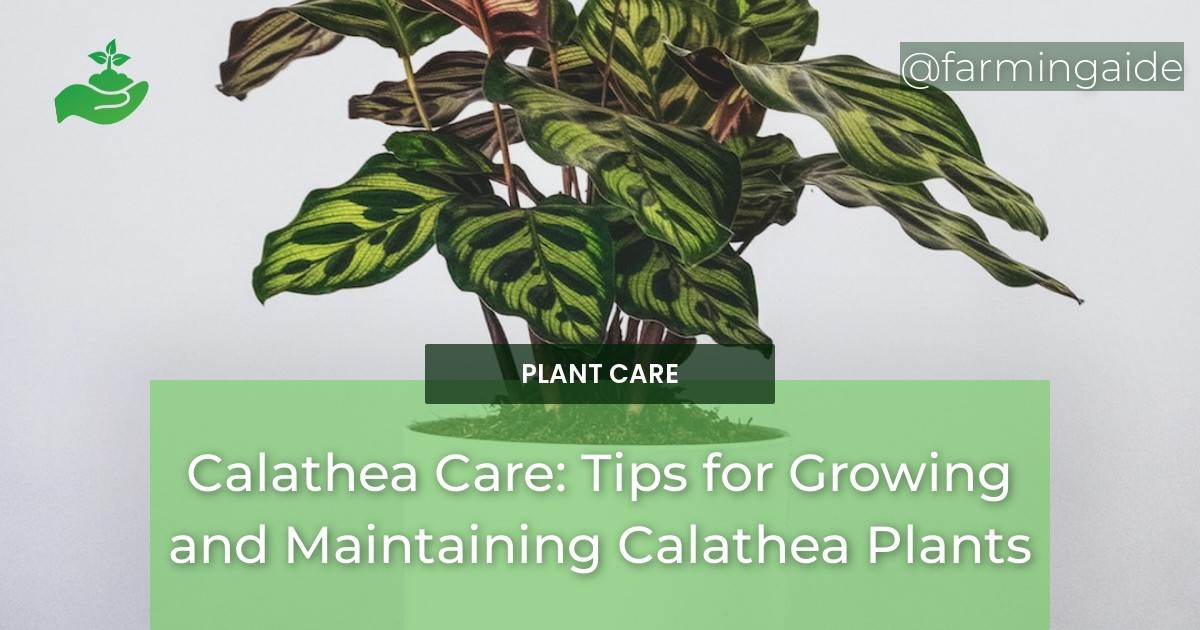Calathea plants are known for their stunning and unique foliage, making them a popular choice among plant enthusiasts. These tropical plants, native to the rainforests of South America, offer a touch of exotic beauty to any indoor space. However, to ensure their lush growth and vibrant colors, proper care is essential. In this comprehensive guide, we will explore all aspects of calathea care, from light and temperature preferences to watering and humidity requirements, as well as fertilizing, dealing with pests and diseases, propagation methods, and tips for preventing leaf curling and browning.
Introduction to Calathea Plants and Their Unique Foliage
Calathea plants belong to the Marantaceae family, which includes various species known for their decorative leaves. The foliage of calathea plants is characterized by intricate patterns, vibrant colors, and unique shapes. These plants can add a touch of elegance and style to any indoor space, making them a popular choice for plant enthusiasts.
Light and Temperature Preferences for Calathea Plants
Light Requirements for Calathea Plants
Proper lighting is crucial for the healthy growth of calathea plants. While they thrive in bright, indirect light, direct sunlight should be avoided as it can scorch their delicate foliage. Place your calathea plant in a well-lit area away from direct sunlight, such as near a north or east-facing window. If the light conditions in your home are limited, you can supplement the natural light with artificial grow lights specifically designed for plants.
Temperature Requirements for Calathea Plants
Calathea plants prefer a warm and humid environment similar to their native rainforest habitat. Ideally, they thrive in temperatures between 65°F and 85°F (18°C to 29°C). It is important to keep the temperature consistent, avoiding sudden temperature drops or drafts, which can negatively affect the plant’s health. If the temperature in your home fluctuates significantly, consider using a humidifier or placing the plant on a pebble tray filled with water to increase humidity levels around the plant.
ALSO READ
Watering and Humidity Requirements for Healthy Calathea Plants
Watering Calathea Plants
Proper watering is essential for maintaining the health and vitality of calathea plants. These plants prefer consistently moist soil, but overwatering can lead to root rot and other issues. Check the soil moisture regularly by inserting your finger about an inch into the soil. If it feels dry, it’s time to water your calathea. Use room temperature water and thoroughly moisten the soil, allowing excess water to drain out of the pot’s drainage holes. Avoid letting the plant sit in standing water, as it can lead to root rot.
Humidity Needs of Calathea Plants
As tropical plants, calatheas thrive in high humidity environments. To create a suitable humidity level, mist the plant’s leaves regularly with room temperature water. Alternatively, you can place a humidifier nearby to increase humidity levels. Another effective method is to group your calathea plants together, as they naturally release moisture through transpiration, creating a more humid microclimate. If the air in your home is particularly dry, you can also use a pebble tray filled with water, ensuring the pots are not directly sitting in the water.
Fertilizing and Feeding Calathea Plants
Calathea plants benefit from regular feeding during the growing season to support their healthy growth. Use a balanced, water-soluble fertilizer specifically formulated for houseplants. Follow the manufacturer’s instructions for the recommended dosage and frequency. It’s important not to over-fertilize, as it can cause salt buildup in the soil, leading to root damage. Generally, fertilizing once a month during the spring and summer months is sufficient. During the fall and winter, when the plant is in its dormant phase, reduce or suspend fertilization.
ALSO READ
Dealing with Common Pests and Diseases Affecting Calathea Plants
Like any other houseplant, calatheas are susceptible to certain pests and diseases. Some common pests that can affect calathea plants include spider mites, mealybugs, and aphids. Regularly inspect your plants for signs of infestation, such as webbing, small insects, or yellowing leaves. If you notice any pests, treat them promptly using organic insecticidal soap or neem oil. It’s also important to maintain good plant hygiene by regularly cleaning the leaves and removing any dead or yellowing foliage.
Propagation Methods for Expanding Your Calathea Collection
If you want to expand your calathea collection or share the joy of growing these beautiful plants with others, propagation is an excellent option. Calatheas can be propagated through division, which involves separating the plant into smaller sections with healthy roots. Choose a mature, healthy plant and carefully remove it from its pot. Gently separate the root clumps, ensuring each section has a good amount of roots and foliage. Plant each division in a separate pot with well-draining soil, and provide the same care as you would for a mature plant.
Can I Use the Same Care Tips for Calathea and Dahlia Plants?
Yes, you can use similar dahlia care tips for growing Calathea plants. Both plants thrive in indirect light, well-draining soil, and consistent watering. However, be mindful of the specific needs of each plant, such as the humidity requirement for Calathea and the winter storage for dahlias.
Calathea Care Tips for Preventing Leaf Curling and Browning
Leaf curling and browning are common issues faced by calathea plant owners. These problems can occur due to various factors, including improper watering, insufficient humidity, excessive light exposure, and cold drafts. To prevent leaf curling and browning, maintain consistent watering, provide adequate humidity, place the plant in suitable lighting conditions, and protect it from drafts. Additionally, gently misting the leaves and regularly wiping them with a damp cloth can help keep the foliage clean and prevent dust buildup, which can hinder the plant’s ability to absorb light.
By following these comprehensive tips for calathea care, you can ensure the health and vitality of your plants, allowing them to thrive and bring a touch of natural beauty to your home or office.


